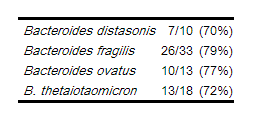Cefoxitin clinical studies
Editor-In-Chief: C. Michael Gibson, M.S., M.D. [1];Associate Editor(s)-in-Chief: Abdurahman Khalil, M.D. [2]
CLINICAL STUDIES
A prospective, randomized, double-blind, placebo-controlled clinical trial was conducted to determine the efficacy of short-term prophylaxis with cefoxitin in patients undergoing cesarean section who were at high risk for subsequent endometritis because of ruptured membranes. Patients were randomized to receive either three doses of placebo (n=58), a single dose of cefoxitin (2 g) followed by two doses of placebo (n=64), or a three-dose regimen of cefoxitin (each dose consisting of 2 g) (n=60), given intravenously, usually beginning at the time of clamping of the umbilical cord, with the second and third doses given 4 and 8 hours post-operatively. Endometritis occurred in 16/58 (27.6%) patients given placebo, 5/63 (7.9%) patients given a single dose of cefoxitin, and 3/58 (5.2%) patients given three doses of cefoxitin. The differences between the two groups treated with cefoxitin and placebo with respect to endometritis were statistically significant (p<0.01) in favor of cefoxitin. The differences between the one-dose and three-dose regimens of cefoxitin were not statistically significant.
Two double-blind, randomized studies compared the efficacy of a single 2 gram intravenous dose of cefoxitin to a single 2 gram intravenous dose of cefotetan in the prevention of surgical site-related infection (major morbidity) and non-site-related infections (minor morbidity) in patients following cesarean section. In the first study, 82/98 (83.7%) patients treated with cefoxitin and 71/95 (74.7%) patients treated with cefotetan experienced no major or minor morbidity. The difference in the outcomes in this study (95% CI: -0.03, +0.21) was not statistically significant. In the second study, 65/75 (86.7%) patients treated with cefoxitin and 62/76 (81.6%) patients treated with cefotetan experienced no major or minor morbidity. The difference in the outcomes in this study (95% CI: -0.08, +0.18) was not statistically significant.
In clinical trials of patients with intra-abdominal infections due to Bacteroides fragilis group microorganisms, eradication rates at 1 to 2 weeks post-treatment for isolates were in the range of 70% to 80%. Eradication rates for individual species are listed below
References
http://www.accessdata.fda.gov/drugsatfda_docs/label/2013/065214s013lbl.pdf
